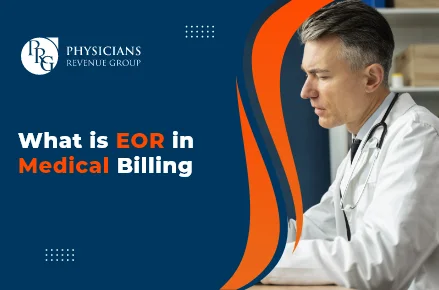
Email: info@prgmd.com | Call: +1 (630) 242-6474
Business hours: 9:00 to 5:00 | Monday to Friday
Email: info@prgmd.com | Call: +1 (630) 242-6474
Business hours: 9:00 to 5:00 | Monday to Friday

Table of Contents
ToggleMedical coding and billing are vital to the healthcare industry; healthcare facilities and hospitals request payment for their services. Medical billing services are significant in ensuring that providers get paid for their services. Furthermore, billing and coding services depend massively on the key terminologies in medical billing.
Have you ever thought about what different medical billing terminology means? And then how do these relate to the job at hand?
For this purpose only, we have put together this guide for elaborating on the key terminologies of medical billing.
American Medical Association is a professional association comprising of the following:
It is one of the largest lobbying groups in the USA, and its claim and goal is to improve public healthcare through education and science.
Furthermore, the AMA is particularly important for medical billers and coders as they publish the official list of Physician Specialty Codes. These codes assist medical coders and billers in identifying and labeling treatment and physician specialties. What’s more, the AMA also publishes the CPT (Current Procedural Terminology) code sets, which facilitate outpatient billing and office procedures.
CMS is a US Department of Health entity that serves as an administrative agency in charge of federal healthcare programs. The CMS oversees the state and as well as the federal insurance marketplaces, including:
The accountable care organization is next on the list of key terminologies in medical billing, commonly known as an ACO in the medical billing and coding industry. It is an organization which connects the reimbursements to metrics/standards of quality. The primary goals of accountable care organizations are to reduce the costs per patient and make high-quality care available to patients. The ACOs are also responsible to the patient and third parties, such as the insurance companies that pay for treatments.
ACOs in the USA comprise healthcare professionals who coordinate for connecting payments to the quality of care the Medicare beneficiaries get. Such groups prefer to use alternative methods of payment, like capitation. Capitation is a method of payment where a group of patients pays a fixed amount per unit of time (hourly) spent seeing a healthcare practitioner.
The COB or coordination of benefits entails an instance where two separate insurers work together to pay a claim for a single person. COB is often for:
Number 5 on the key terminologies in medical billing is:
The diagnoses-related groups classify a patient based on the treatment procedures that they receive. The DRG system is designed to contain the costs within the hospitals. Patients get assigned to their respective groups on the variables including:
The EHRs, or electronic health records, are digitized forms of records of patients’ medical visits, treatments, and diagnoses. Such records make it easier for providers to track the data and then significantly improve patient care. The EHRs facilitate an efficient healthcare experience, as specialists, physicians, and other authorized personnel (staff) from multiple healthcare providers can create, view, and update these.
The explanation of benefits also falls under the terminologies in medical billing. It is a document sent to patients by the insurance companies after patients receive treatment(s). The document contains a list of items the insurance company covers throughout the diagnosis and treatment process.
An ERA, or electronic remittance advice, is next on our list of common terminologies in medical billing. It is a digital version of the medical payment explanation. The document itself contains details regarding the insurance company’s claims payment. When a claim is denied, the ERA will come with the reasons for denial.
The FQHCs are qualified healthcare centers offering a wider range of community medical care services. These services include:
All such entities receive federal government grants based on Section 330 of the Public Health Services Act.
The DME or durable medical equipment is any equipment that patients use for maintaining or improving their quality of life. The common types of DMEs include but are not limited to:
Sometimes, these items might be covered by a patient’s insurance.
Share:
Categories
Recently Added

What is an ABN in medical billing?

What does a Clearinghouse do During Claims Submission?

What is EOR in Medical Billing?
We Would Love to Assist You!
We treat your data confidentially and don’t share any information with a third party.